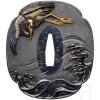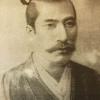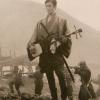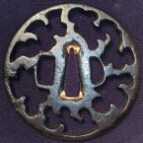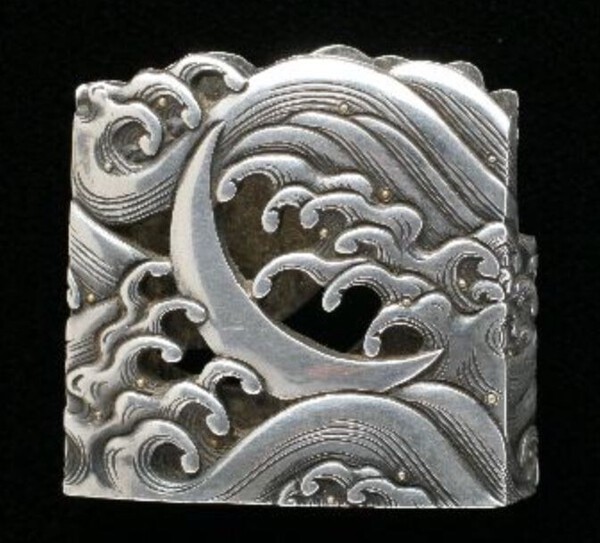-
Posts
3,090 -
Joined
-
Days Won
70
Ford Hallam last won the day on August 15 2023
Ford Hallam had the most liked content!
Contact Methods
-
Website URL
http://www.fordhallam.com/
Profile Information
-
Gender
Male
-
Location:
United Kingdom
Profile Fields
-
Name
Ford Hallam
Recent Profile Visitors
The recent visitors block is disabled and is not being shown to other users.
Ford Hallam's Achievements
-
I think that we might have a very long and vigorous debate regarding the possible age of this alleged Tachi tsuba, Dan. I'd suggest that Mr Markhasin raises more questions and problems to his attribution than his attempt to justify it actually achieves. It's simply not reliable enough to base any sort of theory or speculation on. But the problem is, as always, if you are only reliant on internet material and have no access to more solid and scholarly reference books to examine these sorts of claims you have no way of evaluating their validity. I don't imagine there are many copies of the Tokyo Museum catalogue of early koshirae on the shelves of our membership for example.
-
I think a pertinent question might be, under what circumstances, if any, would the Shogunate allow any members of the Imperial household to go running around wearing weapons that were any more then merely highly ceremonial and significantly less than battle ready. The warrior class could never attain the lofty heights of courtly refinement and the court certainly wouldn't lower them selves to boorish warrior affectations.
-
Seeing the close ups of the gold surface this morning I'd have to adjust my initial opinion. The peeling on the one set of ashi strongly suggests plating. On balance electro-plating rather than mercury fire gilding/kin-keshi. Although what looks like fine porosity on the other menuki back looks a bit like un-burnished kin-keshi. The positive bubble again looks like a casting artefact. There seems to be some wear of the gilding on the edges here, and it looks a bit like copper underneath. If it is copper it wouldn't have been cast, so perhaps brass? The flaking off gold is quite extreme but as the ashi are often attached by means of lead solder the gold adhesion would be weak in those areas. if it is lead solder there then it would be evidence in favour of the gold being electroplated, albeit very thickly. An in-hand examination would be so much more informative . Pure gold weighs twice what copper does so the feel is usually quite noticeable.
-
I don't see any reason to suspect they're plated. I very much doubt they're 24ct/pure gold. More like 20ct, gold with a little silver and a tiny bit of copper. To clarify, 18ct is 75% pure gold plus other non gold metals to alloy. With yellow gold that'd typically be silver and copper in equal parts, ie; 12.5% each. I don't think these are castings either, more like late Meiji (at the earliest) but properly raised and chased menuki. I wouldn't regard them as particularly fine examples of menuki sculpture though. Sources: My opinion as a goldsmith of over 40 years experience and a Japanese metalwork practitioner and specialist for 30 years.
-
lordkite started following Ford Hallam
-
I'd have to agree with Jean. Is it perhaps a modern Iaito tsuba?
-
I would suggest that first we'd need to agree on what criteria constitute a good forge. A 'perfect' forge weld in logical extreme definition might be one that is absolutely without any gaps or slag inclusions, and thus completely lacking on any definition regarding hada/grain. The microscopic slag inclusions do provide addition corrosion protection though. In the same vein schools are noted for very different degrees of refinement in terms of exactly the 'perfection' of the forge welds. The appreciation of these varying qualities is, of course, subjective.
-
My first thought was that this was a repurposed end of a broken blade. The polish looks to be an emery paper 'special'. The opening in the tip looks painful! 50 quid isn't a terrible investment on the learning path but I'd cut my losses at this point, pardon the unavoidable pun It'd just be more good money after bad. If you wanted to go the DIY restoration way I think you could do better in terms of blade
-
Not as annoying as the use of tsuba as decorative wall tiles Philistine behaviour!
-
If by qualified you mean someone who has completed a full apprenticeship in Japan and is duely recognised there as such then I'd not hesitate to recommend Andrew Ickeringill, based in Australia. Of course it would depend on whether the blade was worth his time.
-
If the influence of Japanese art on the West interests you then I could not recommend more highly Siegfried Wichmann's 1981 publication 'Japonisme.'
-
Hi Dan glad to offer what I can. As to how it was used. My understanding was that a suitable layer of fine damp clay was first prepared on a board. A fine dusting of soot was then applied to the intended model, the finished tsuba, menuki etc. The metalwork then pressed into the clay and it all allowed to dry out a little bit, perhaps over night. I'd assume this was all done before the very final polish and patination processes. Then, after the metal work was removed the imprint was filled with very hot/fluid matsu-yani allowed to cool to properly solidify and then removed. I've seem some models thus produced but with the addition while still very hot/fluid, of a backing of coarse cloth as reinforcement. Using hot pitch to create a mould directly from the metalwork is unlikely as one of its most useful features is precisely its tendency to stick to metal like the proverbial .... to a blanket! .
-
Dale, I think it was probably a number of factors at play. Matsuyani was readily at hand, so it got used, we see evidence of this sort of adaptation of materials in patination too. Half the kitchen cupboard seems to have been tried at various times Matsuyani is capable of delivering a very fine imprint in the first instance and while it does break down over time I reckon for the needs of the people making and using them back then it was more than adequate. As Darrel pointed out clay is prone to distortion but I'd add that the fineness it may have been capable of reproducing might not have been quite good enough to capture tosogu detail. My own feeling is that they were records for the studio and most likely used to train apprentices in the finer points of metal sculpting and the style and technique of a particular studio. A bit like the plaster models used by the classical drawing and painting schools beginning in the Renaissance. The faithful adherence to and absorption of the school or studio style was at the heart of traditional training after all.
-
To clarify, the pitch in question here is called matsu-yani (pine pitch) in Japanese workshops, as it was in the Edo period also. It's mentioned in the Soken Kishō for example. The typical recipe is: 750g Pine rosin ( that's the sticky resin sap with the terpentine etc. removed) , 1000g filler material, traditionally a finely ground fire clay, nowadays plaster of Paris of more frequently used, 50ml of vegetable oil and a teaspoon of carbon powder. I don't think a chemist would characterise matsu-yani or yani/rosin alone for that matter, as a type of plastic. Here's a link to a film I made some years ago showing how to make the stuff. As can be seen it is really quite runny when hot and remains quite pliable while warm. Once cold it can be broken almost like pottery. Worth noting that over time the material breaks down, probably due to a gradual loss of oils etc. leaving the yani more friable and grainy in appearance.
- 9 replies
-
- 10
-

-

-

-
Thanks Mark, kind offer but not really the sort of 'feel' I'm aiming for. And thank you Manuel, those are indeed a good possibility. I'll follow the auction and see where it takes me. Thanks again. edit to add, missed it! Pity, not bad hammer price.
-



